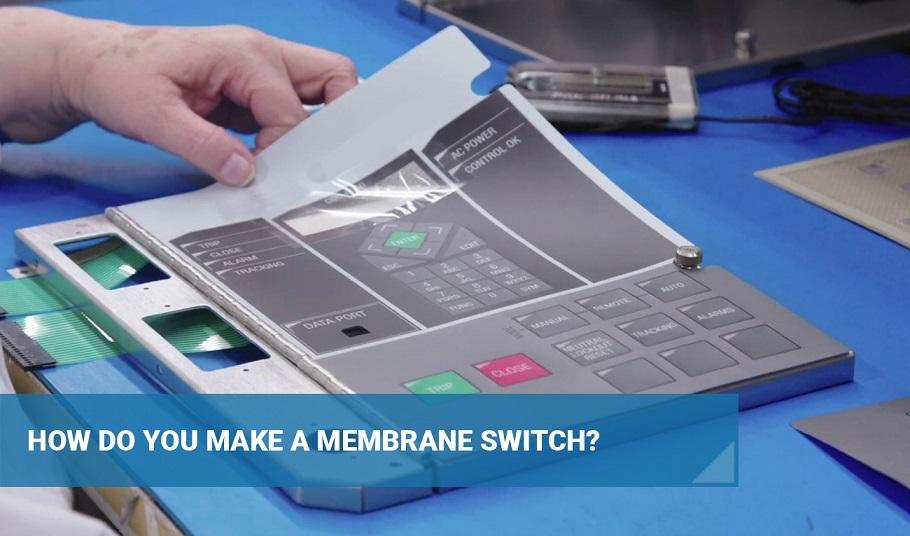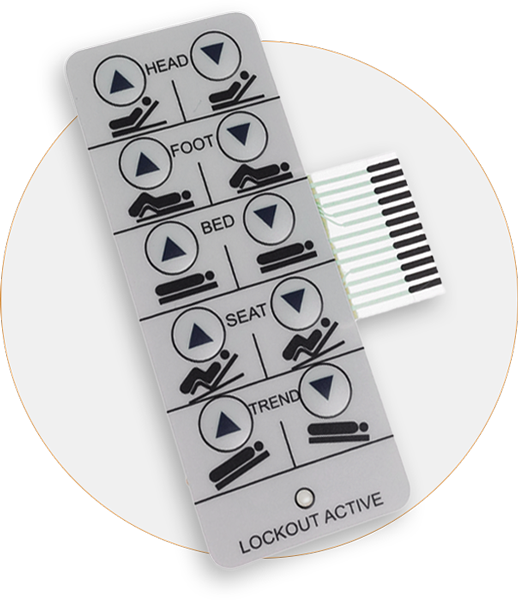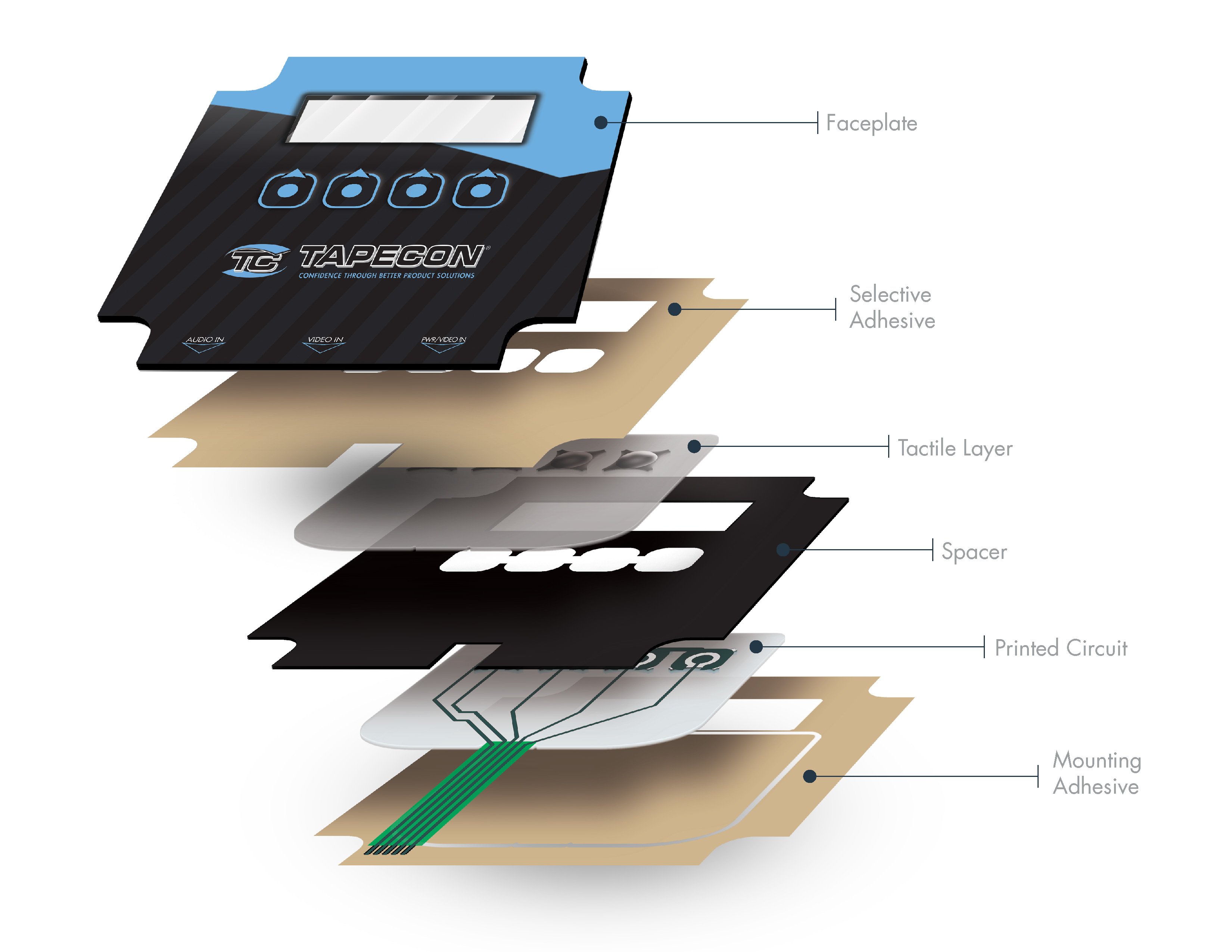The Role of a Membrane Switch in Modern Touch Interfaces and Controls
The Role of a Membrane Switch in Modern Touch Interfaces and Controls
Blog Article
Understanding the Performance of Membrane Changes for Interface Tools
The performance of membrane changes stands for a substantial advancement in individual interface style, combining efficiency with aesthetic convenience. These buttons operate through a multi-layered framework that translates user communications into electric signals, permitting both portable layouts and strength versus ecological factors. As markets increasingly focus on individual experience, understanding the subtleties of membrane button modern technology becomes crucial. What ramifications do these innovations hold for future applications, and exactly how might they redefine user interactions throughout numerous devices?
What Are Membrane Layer Switches?
Membrane switches are innovative interface gadgets that promote customer interaction with electronic tools. These functional parts are composed of several layers, consisting of a graphic overlay, spacer, and a printed circuit layer. The style enables a smooth combination right into numerous digital tools, improving both the aesthetic and functional facets of user interfaces.
Membrane buttons are commonly employed in a vast array of applications, from family home appliances to industrial equipment and medical devices. Their building generally includes a slim profile, making them an ideal option for compact designs. The tactile feedback provided by these switches can be engineered to meet specific customer choices, making sure efficient communication between the individual and the gadget.
Longevity is an additional considerable advantage of membrane buttons, as they are immune to dust, moisture, and chemicals, which boosts their life-span sought after settings. In addition, these buttons can be personalized in terms of form, size, and visuals layout, permitting branding and user-specific attributes. In general, membrane switches over represent a useful option for boosting individual experience in electronic gadgets, combining capability with aesthetic appeal in a reliable manner.
Exactly How Membrane Switches Over Work
Operating on a simple concept, membrane layer switches over utilize a layered construction to sign up user input properly. Each switch is composed of multiple layers, including a published circuit layer, a spacer layer, and a top visuals layer, which are developed to interact flawlessly. When a customer presses the top layer, it presses the spacer layer, bringing the conductive components of the circuit layer right into call with each other.
This call produces a closed circuit, indicating the device to execute a specific feature. The design enables various setups, including responsive comments, which can improve the individual experience by supplying a physical sensation upon activation. The materials made use of in membrane layer switches commonly consist of flexible substrates, such as polyester or polycarbonate, which make sure resilience and resilience versus deterioration.

Secret Advantages of Membrane Layer Buttons

An additional considerable benefit is their compactness. Membrane anonymous layer buttons are slim and lightweight, which enables suppliers to save space in their tools without sacrificing performance. This feature is specifically beneficial in applications where weight and quantity are critical factors to consider.
Furthermore, membrane layer buttons are resistant to dirt, moisture, and chemicals, boosting their longevity. This durability extends their life expectancy and reduces the demand for frequent replacements, causing price savings in time.
Additionally, the responsive responses provided by membrane switches can be optimized to enhance customer communication. They can include attributes such as raised buttons or distinct clicks, boosting usability and individual experience.
Applications Throughout Industries
Interface tools making use of membrane buttons prevail in a large range of markets, showcasing their versatility and functionality. Membrane Switch. In the medical sector, membrane buttons are essential to gadgets such as diagnostic equipment and client tracking systems, where their longevity and ease of cleansing are critical for maintaining hygiene standards. In the automotive industry, these switches are employed in dashboard controls and infotainment systems, supplying a smooth and modern-day interface for individuals.
In addition, the customer electronic devices sector gain from membrane layer buttons in home appliances and portable tools, where compact layout and user-friendly interfaces enhance user experience. Industrial applications also take advantage of membrane layer changes for control panels in machinery and automation systems, stressing their effectiveness and resistance to rough environments.
In the aerospace and defense industries, membrane layer switches are used in cockpit controls and equipment, where integrity and performance under extreme conditions are paramount. In addition, the video gaming sector significantly integrates membrane switches in controllers and arcade devices, contributing to an engaging user experience. On the whole, the convenience of membrane switches allows their widespread usage throughout many industries, emphasizing their importance in modern-day interface design.
Future Patterns in Membrane Layer Switch Technology

Additionally, using sophisticated products, such as polycarbonate and polyester films, is expected to climb, providing enhanced longevity and resistance to environmental stressors. These products add to the overall durability of membrane layer buttons, making them ideal for harsher industrial applications.
Additionally, the unification of wise innovation, including IoT connection, will certainly make it possible for membrane layer buttons to communicate with other tools and systems, facilitating an extra interactive user experience. This trend lines up with the expanding need for wise gadgets across different markets, from health care to customer electronics.
Last but not least, customization options are anticipated to expand, allowing producers to produce bespoke services tailored try this site to particular user needs and preferences. These advancements will certainly place membrane layer switches as vital elements in the development of individual interface technology.
Final Thought
To conclude, membrane layer changes represent a critical development in interface technology, offering a dependable and versatile remedy for diverse electronic applications. Their split building promotes compact layout, while features such as tactile responses improve customer communication. The sturdiness against ecological aspects better solidifies their energy throughout several industries. As developments in material science and touch picking up technologies continue, the functionality and applicability of membrane buttons are expected to broaden, strengthening their significance in contemporary electronic devices.
Report this page